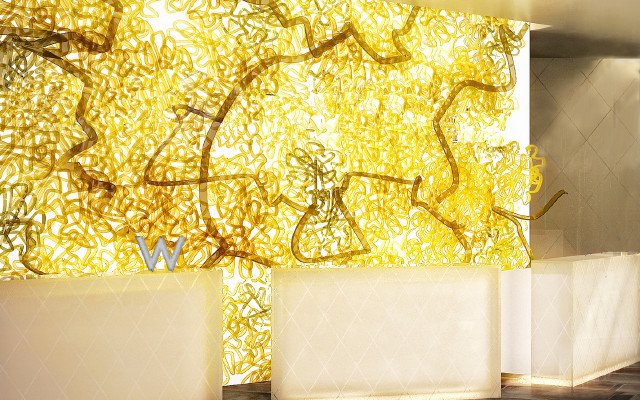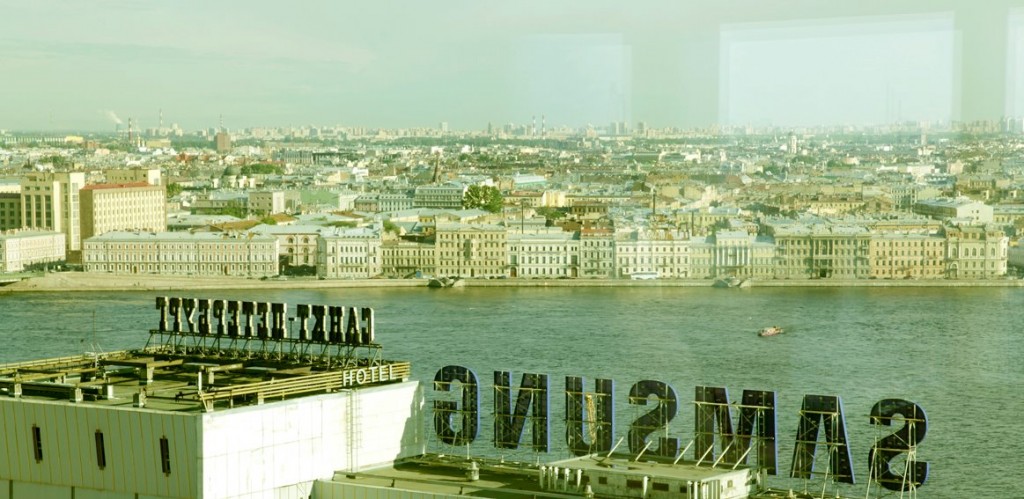
White summer nights in the Sofitel So St. Petersburg
Contributed by Jens Hoffmann
Here’s what it was like to stay there. The Sofitel So hotel (former W Hotel) provides an integrated contemporary lifestyle experience. A highly-anticipated hotel in St. Petersburg. It offers 137 stylish guest rooms, a signature restaurant, bar and rooftop lounge by three Michelin star chef Alain Ducasse.
Designed by Milan-based Antonio Citterio Patricia Viel and Partners who were inspired by the architectural ancestry of the city and jewel-tones of the famous Fabergé Egg. St. Petersburg reveals surprising elements layer-by-layer throughout the hotel. A major European cultural as well as an international hot spot especially during the “White Night Festival”. The passion for design, fashion and music will set the stage for fabulous and will ensure that the White Nights never end.
Back to the hotel, the interior design of the hotel by Antonio Citterio Patricia Viel focused on color, light, texture and comfort to bring the vibrancy and glamour of the city’s iconic architecture and brilliant colors inside the hotel. Surrounded by historical landmarks, its cutting edge design approach sets itself apart from the historic and baroque style of the city. Located in the heart of the “Venice of the North”, the hotel brings vibrancy to a city that has for centuries hosted the social elite and aristocracy.
The hotel’s location is just steps from the city’s landmarks like the magical St. Isaac Cathedral, the Winter Palace, which houses the famed Hermitage Museum, and the wide Neva River giving St. Petersburg its charm. Truly a lifestyle experience with a complete service offer. All suites and rooms featuring custom-made furnishings with witty accents unique to St. Petersburg.
They offer a private jet service.

Enjoy.
Facts about the city:
Built by Peter the Great to serve as a window to the West, St. Petersburg was the capital of the Russian Empire for over two centuries and retains much of its imperial grandeur today. Its Italianate palaces, domed cathedrals, broad boulevards and exceptional museums draw millions of admirers each year and, in addition to its legendary architecture and cultural attractions, there’s plenty more to discover about the port city’s past and present. It’s widely publicised that it would take almost 10 years to view The Hermitage’s collection of more than three million exhibits, but did you know about its feline inhabits? In 1745, the Winter Palace was suffering from a rodent problem. The solution? Cats. Elizabeth of Russia ordered cats from Kazan to act as mousers and their descendants are still there to this day – around 60 can be found prowling the grounds at any given moment. They have their own dedicated kitchen, hospital and even a PR officer, and visitors can apply to adopt one of these regal hunters.
St. Petersburg Metro is one of the world’s deepest
Besides being beautifully decorated with colourful murals, mosaics and elegant chandeliers, St. Petersburg Metro is actually incredibly deep. Its deepest station, Admiralteyskaya, lies just around the corner from Hotel Astoria, with its two escalators descending to a depth of 86m. Only two Metro systems in the world are deeper: those of Kiev and North Korea, both of which were built to serve as emergency shelters. However, the explanation for St. Petersburg’s deep tunnels is less sinister and more logical: the tunnels had to undercut marshy ground and numerous canals in order to be stable.
St. Petersburg’s 342 bridges are all very different
Rumour has it that when Peter the Great built St. Petersburg, he sought inspiration from Venice’s canals. Yet later rulers became frustrated by this system of waterways, especially given the city’s freezing temperatures during winter, and hundreds of bridges have sprung up since. Among the most notable is Anichkov bridge, adorned with Peter Klodt’s iconic horse sculptures, famously buried during WW2 to prevent them being damaged. There’s the elegant Lomonosov Bridge, built in the 1780s, as well as Red, Blue and Green painted bridges over the Moika, bridges named after countries such as the Egyptian, English and Italian bridges, and of course, the modern drawbridges, which have left many an unwary traveller stranded in the twilight hours.
A canon is fired at midday – every day
As the clock strikes 12pm around St. Petersburg and cathedral bells chime, visitors might also be surprised to hear the boom of a real canon. It’s a blank shot, fired from the Peter and Paul Fortress, yet no less impressive for that. The tradition originated in Peter the Great’s time, signalling the beginning and end of the working day and alerting residents to floods or marking key events. Later, in the late 1800s and early 1900s, it was fired daily at noon to help citizens set their watches. This ended in 1934 and began again in 1957 to celebrate the 250th anniversary of the city’s founding. Get a great view across the river from the Naryshkin Bastion.
St. Isaac’s Square escaped the damages of WW2 for unusual reasons
One of the city’s most prestigious squares and home to both the eponymous cathedral and Hotel Astoria, this landmark area was untouched during the raging war of 1939-45. Many ask why St. Isaac’s Cathedral, with its golden dome so obviously visible from the air and even from the Gulf of Finland, survived the siege of Leningrad when so much didn’t? One reason is that the dome was painted grey to deflect attention, but perhaps the most popular theory is that Nazi planes used it as a reference point, which is why they left it standing. Just metres away, Hotel Astoria also remained undamaged. Built for the Romanovs between 1910-13 to mark the dynasty’s tercentenary celebrations.
Disgusting gossip, the german leader Adolf Hitler planned to host his victory party in the Astoria hotel’s Winter Garden. It never happened. Thx god.
Travel the globe, joyful and friendly like Matt…
SECRET :




